Blogs



February 24, 2025
As the holy month of Ramadan approaches, the UAE has announced adjusted work hours for both public and private sector employees. These changes aim to accommodate the spiritual and physical needs of those observing Ramadan while maintaining productivity and service delivery. This article provides a comprehensive overview of UAE Ramadan working hours private sector, flexible arrangements, and key considerations for employees and employers during Ramadan 2025.
Ramadan 2025 is expected to begin on Saturday, March 1, based on astronomical calculations. However, the official start date will be confirmed by moon-sighting committees on February 28, 2025. The holy month will last for 30 days, with fasting hours averaging 13 hours per day in the UAE.
Read more: When is Ramadan 2025 in Dubai?
The Federal Authority for Government Human Resources (FAHR) has announced reduced work hours for public sector employees during Ramadan 2025. The new schedule is as follows:
Key Highlights:
The Ministry of Human Resources and Emiratisation (MOHRE) has confirmed that private sector employees will have their workdays reduced by two hours daily during Ramadan. Companies are encouraged to adopt flexible or remote work patterns to align with the reduced hours.
Key Highlights:
To balance reduced work hours with operational efficiency, the UAE government and private companies are leveraging digital transformation and flexible work policies. Key initiatives include:
Read More: Eid Al Fitr 2025 in the UAE
While federal guidelines provide a uniform framework, some emirates may adjust work hours to meet local needs:
Sharjah: Government offices operate on a 4-day workweek (Monday to Thursday) with a 3-day weekend (Friday to Sunday). Ramadan adjustments are tailored to this structure.
Dubai and Abu Dhabi: Federal work hours apply, but local authorities may introduce additional flexibility based on operational demands.
Ramadan brings significant changes to daily routines across the UAE. Here’s what to expect:
Private schools are expected to operate for a maximum of 5 hours per day, with classes ending by 12:00 PM on Fridays.
Read More: The Ultimate Guide to Iftar in Dubai: Best Iftar Experiences, Deals, and Timings
For Employers:
For Employees:
During the holy month of Ramadan, working hours in the UAE are reduced by two hours per day for private sector employees, as per UAE Labour Law (Federal Decree Law No. 33 of 2021) and Cabinet Resolution No. 1 of 2022. This means the maximum working hours during Ramadan are 6 hours per day or 36 hours per week (based on a six-day workweek) or 30 hours per week (based on a five-day workweek).
Any work performed beyond these reduced hours is considered overtime (OT) and must be compensated accordingly.
Overtime Threshold:
Overtime applies after the 6th hour of work each day during Ramadan. For example, if an employee works 7 hours, the 7th hour is considered overtime.
If the employee takes a one-hour lunch break, overtime starts after the 7th hour (since the break is not counted as working time).
Overtime Pay Rate:
According to Article 19(2) of the UAE Labour Law, employees are entitled to 125% of their regular hourly wage for overtime work.
For example, if an employee’s hourly wage is AED 50, their overtime rate would be AED 62.5 per hour (AED 50 + 25%).
Maximum Overtime Limits:
Overtime must not exceed 2 hours per day, unless the work is necessary to prevent a significant loss or accident.
Total working hours, including overtime, should not exceed 8 hours per day during Ramadan.
Key Points to Remember
By adhering to these guidelines, employers can ensure compliance with UAE Labour Law while maintaining fair treatment of employees during Ramadan. Properly calculating and compensating overtime not only avoids legal penalties but also fosters a positive work environment during this sacred month.
Invest Now: New Real Estate Projects in Dubai
Muslim employees should work up to 8 hours per day or 48 hours per week, as per UAE Labour Law.
Yes, non-Muslim employees are eligible for reduced hours without salary deductions.
Yes, companies may implement remote work policies within the limits of reduced hours.
Employers who fail to adhere to reduced work hours may face fines or legal action under UAE labour regulations.
Conclusion
The UAE’s adjusted work hours during Ramadan 2025, including UAE Ramadan working hours for the private sector, reflect the country’s commitment to balancing cultural and religious practices with modern work requirements.
By embracing flexible arrangements and digital solutions, both public and private sectors ensure that employees can observe Ramadan while maintaining productivity and service excellence. Specifically, the Ramadan timing for private sector 2025 are designed to accommodate spiritual obligations without compromising professional responsibilities.
Whether you’re in the public or private sector, these changes provide an opportunity to focus on spiritual growth, family time, and community engagement during this sacred month.
Wishing everyone a blessed and peaceful Ramadan Kareem!
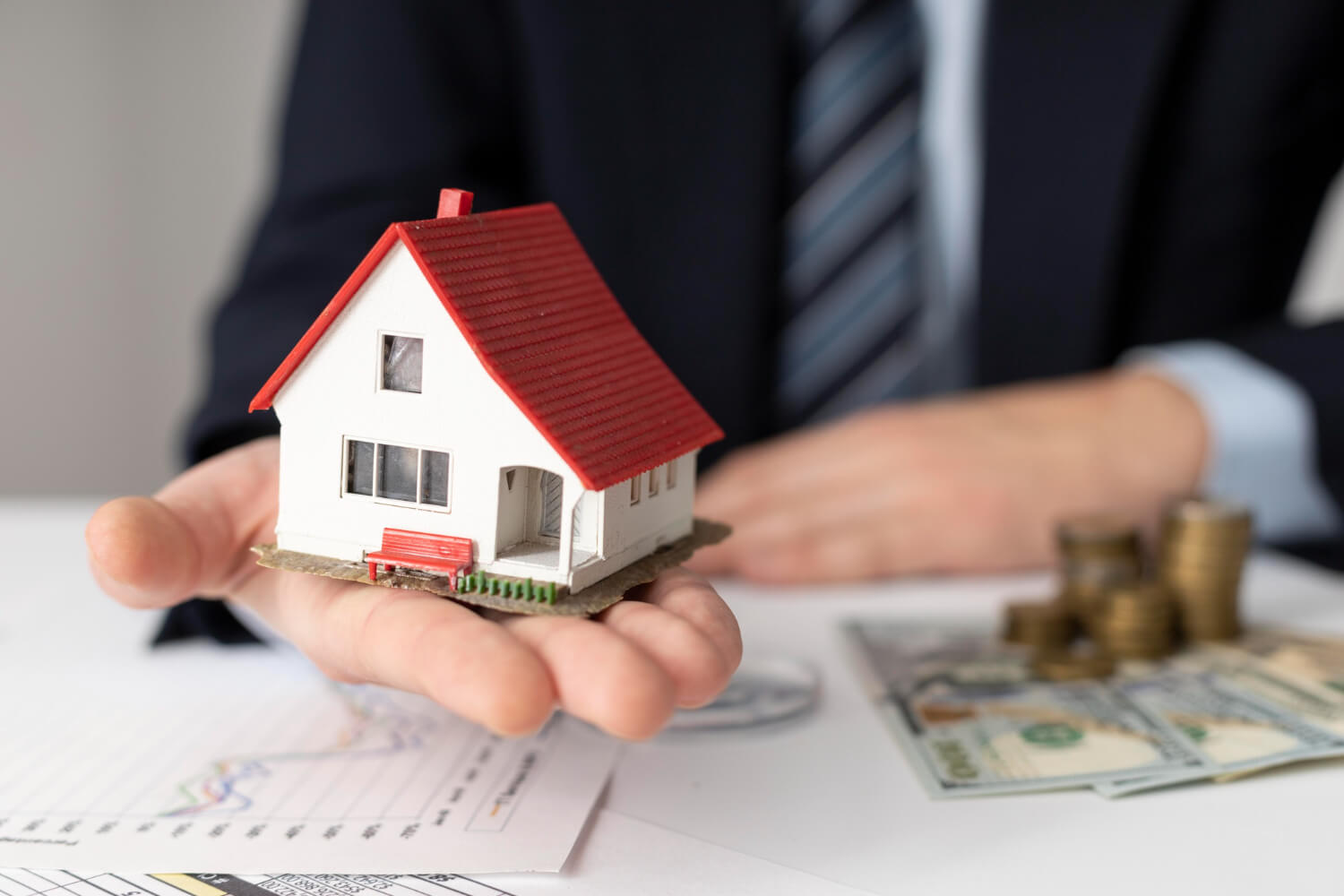
February 23, 2025
If you're renting a property in Dubai, you need to be familiar with the Rera rent increase calculator. This essential tool, provided by the Dubai Land Department (DLD), allows tenants and landlords to determine if a rent increase is legally permissible based on the rental index Dubai. Whether you're renewing your lease or negotiating rent adjustments, the rental index calculator ensures transparency and fairness in Dubai's real estate market.
Dubai’s rental market is dynamic, with property values fluctuating based on market trends. The Dubai rent index calculator ensures that rent adjustments align with fair market values rather than arbitrary landlord demands. The rental index Dubai was introduced to:
Explore More: Rent Increase Law in Dubai
The Rera rental index calculator Dubai is an official tool that calculates rental price adjustments in line with Dubai’s market regulations. The Dubai rent index calculator uses data from the Dubai land rental index, which is updated regularly to reflect current market conditions. By using this tool, both tenants and landlords can verify if a rent hike complies with the Dubai rental index. The Rera rent increase calculator ensures rental transparency and fairness, making it a vital part of Dubai’s rental market infrastructure.
Using the rent increase calculator is straightforward. Follow these steps:
The Rera rent increase calculator plays a crucial role in maintaining a fair rental market in Dubai. Here’s why:
Explore More: Properties for Rent in Dubai
The Rera rental index calculator Dubai considers several factors when determining rent adjustments:
The Dubai land rental index is a database of rental values compiled from real estate transactions. The rental index Dubai updates periodically to reflect:
The Rera rent increase calculator utilizes this data to determine permissible rent adjustments, making it an essential tool for tenants, landlords, and investors.
No. The Rera rental index calculator Dubai prevents landlords from increasing rent beyond legal limits set by the Dubai rental index.
The Dubai land rental index is updated annually by the Dubai Land Department, but market changes can impact adjustments more frequently.
Yes. The rental index calculator Dubai is the official tool for legal rent calculations, and both tenants and landlords must follow its guidelines.
If a rent hike exceeds the Dubai rent index calculator guidelines, tenants can file a complaint with the Rental Dispute Center or seek legal consultation.
Yes. While the Dubai rent index calculator provides a guideline, tenants and landlords can negotiate terms based on property conditions and long-term tenancy agreements.
Yes. The Dubai land rental index covers all residential and commercial areas in Dubai, ensuring consistent rental pricing.
New tenants can use the Dubai rent index calculator to ensure they are not overpaying for rent compared to similar properties in the same area.
Yes. Many real estate agencies rely on the Dubai rental index to offer clients data-driven insights on rental trends and investment opportunities.
Navigating Dubai’s rental market can be challenging, but the Rera rent increase calculator simplifies the process. Whether you’re a tenant or landlord, using the Dubai rent index calculator ensures fair and transparent rental pricing. Stay updated with the latest Dubai land rental index changes and use the rental index calculator Dubai to make informed rental decisions.
If you have questions about the Rera rent increase calculator, share your thoughts in the comments or explore more insights on Dubai’s rental market!

February 20, 2025
Dubai’s rental market constantly evolves, with property prices and demand influenced by economic trends, investor activity, and government regulations.
For both tenants and landlords, understanding the rent increase law in Dubai is essential to avoid disputes and ensure compliance with legal guidelines set by the Real Estate Regulatory Agency (RERA).
Many tenants often ask: Can a landlord increase rent in Dubai after 1 year? The answer depends on market rent comparisons, official regulations, and whether the Dubai rental increase guidelines are followed.
Under RERA regulations, landlords must adhere to specific rules for rent increase, ensuring that any rent adjustment aligns with the RERA Rental Index.
To help tenants and landlords navigate these laws, this guide will explain how much a landlord can increase rent in Dubai, the legal conditions for rent hikes, and the latest updates affecting Dubai’s rental market.
Whether you are a tenant looking to verify your rights or a landlord seeking to understand Dubai rent increase rules, this article covers everything you need to know.
The rent increase law in Dubai is regulated by Decree No. 43 of 2013, which outlines the legal conditions for rental adjustments.
The Real Estate Regulatory Agency (RERA), a division of the Dubai Land Department (DLD), is responsible for enforcing these regulations to ensure fairness in the rental market.
One of the most important rules for rent increase is that landlords cannot increase rent arbitrarily. Instead, they must follow the guidelines set by the RERA Rental Index, which determines rent adjustment limits based on market conditions.
The Dubai rent increase rules protect tenants from excessive hikes while allowing landlords to adjust rents within legal limits.
If these conditions are not met, tenants can challenge the rent increase by filing a complaint with the Rental Dispute Settlement Centre (RDSC).
This ensures that rent hikes are transparent, justified, and in line with Dubai rental regulations.
Explore More: Properties for Rent in Dubai
The rent increase law in Dubai enforces strict conditions that landlords must meet before adjusting rental prices. These regulations ensure fair treatment for tenants while allowing landlords to maintain rental values in line with the market.
One of the key Dubai rent increase rules is that landlords cannot increase rent during the first two years of a tenancy agreement.
This law applies to both residential and commercial properties, providing tenants with financial stability in the initial lease period.
If these rules for rent increase are not followed, tenants have the right to dispute the hike through the Rental Dispute Settlement Centre (RDSC). Filing a complaint ensures that landlords comply with Dubai’s rental regulations and that rent increases remain within legal limits.
The rent increase law in Dubai does not allow landlords to raise rent randomly. Instead, rent adjustments are strictly regulated based on the RERA Rental Index, which compares the property’s current rent with similar properties in the same area. This ensures that any rent hike is fair and justified.
The Dubai rent increase rules specify that if a property’s rent is already close to market rates, no increase is allowed. However, if the rent is significantly lower than the market average, landlords
These rules for rent increase ensure that landlords cannot impose excessive rent hikes while allowing fair market adjustments.
Both tenants and landlords can check the RERA Rental Index online through the Dubai Land Department’s website or use the Smart Rental Index, a newly introduced tool for more accurate calculations.
The rent increase law in Dubai requires landlords to follow a strict legal process before implementing any rent hike. Failing to comply with these Dubai rent increase rules makes the increase invalid, allowing tenants to challenge it legally, to legally increase rent, landlords must follow these steps:
Before proposing a rent increase, the landlord must compare the current rent with the RERA Rental Index or the Smart Rental Index.
This ensures that the increase aligns with Dubai’s official rental guidelines.
If a rent increase is applicable, the landlord must send a written notice at least 90 days before the lease renewal date. This notice can be delivered via:
After receiving the rent increase notice, the tenant has the right to:
If both parties agree on the rent adjustment, the lease contract must be updated and registered in Ejari to make the new terms legally binding.
If a landlord fails to provide a 90-day notice, the rent increase becomes invalid, and the tenant can continue paying the previous rent.
In January 2025, the Dubai Land Department (DLD) introduced the Smart Rental Index, a new AI-powered tool designed to make rent increase calculations more transparent and accurate.
This system enhances the rent increase law in Dubai by providing real-time rental data, reducing disputes, and ensuring that rent adjustments reflect market trends.
With the introduction of the Smart Rental Index, landlords now have a more accurate tool to determine rent increases, while tenants can easily verify the fairness of proposed rent hikes.
The Dubai rent increase rules remain in place, but this new technology ensures that both parties have access to real-time, data-driven rental values.
Mada Properties is a trusted real estate brokerage in Dubai, specializing in property sales, leasing, and investment consultancy.
With in-depth market expertise, Mada Properties helps clients navigate Dubai rent increase rules, tenant rights, and investment opportunities in the city’s dynamic property market.
Yes, but only if the RERA Rental Index allows it, the 90-day notice rule is followed, and the increase stays within legal limits. Otherwise, the increase is invalid.
The rent cannot be increased, and the tenant has the right to continue paying the current rent.
File a complaint with the Rental Dispute Settlement Centre (RDSC) by submitting your lease contract, rent records, and landlord’s notice. The RDSC will issue a legally binding decision.
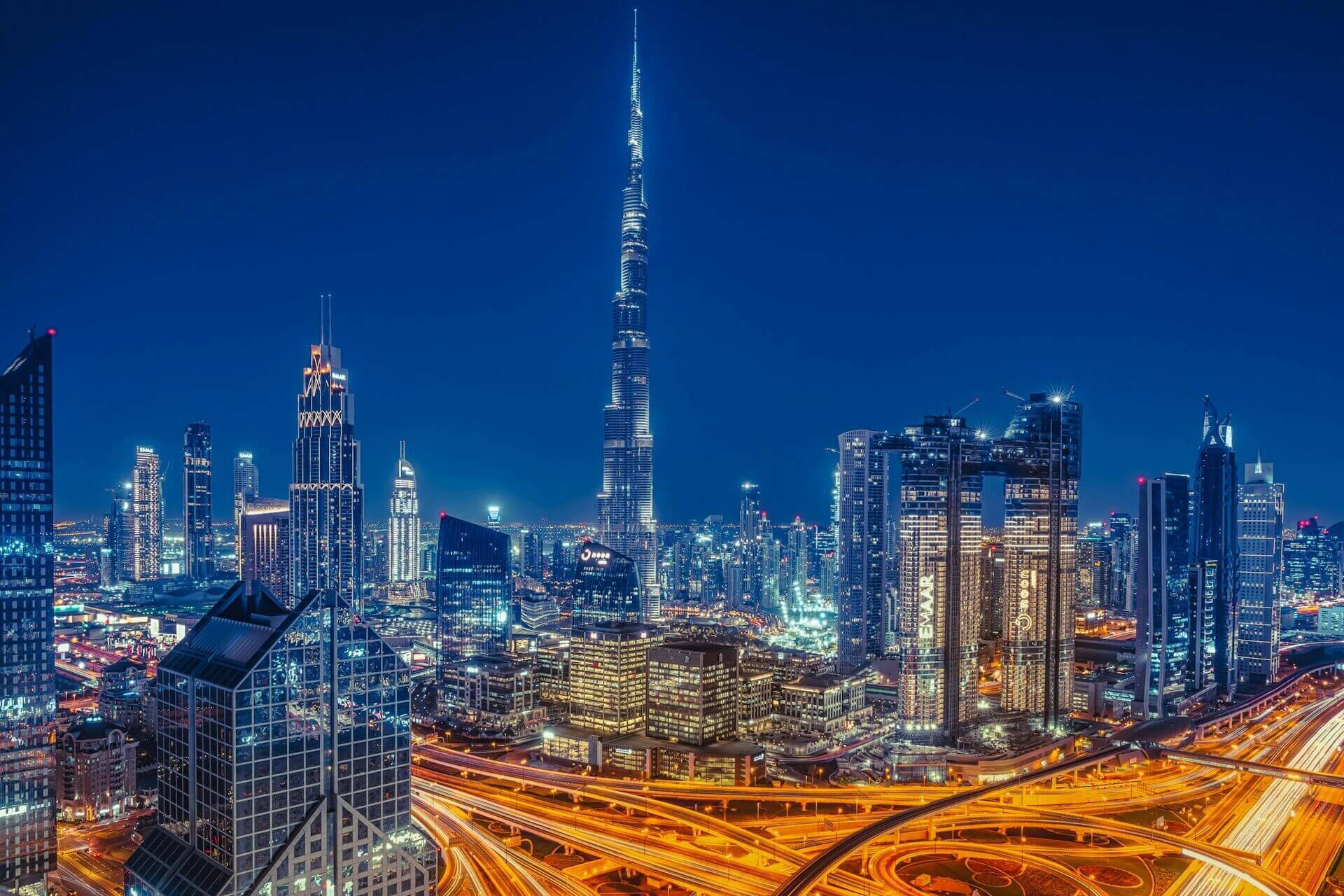
February 16, 2025
The Dubai real estate market forecast 2025 suggests a dynamic and prosperous future, with several key trends shaping the landscape. Whether you're an investor or a prospective homeowner, understanding these trends will help you make informed decisions. From government initiatives to global economic factors, there's plenty to watch as Dubai continues to evolve into a leading global hub.
As we look ahead to 2025, the Dubai real estate market forecast indicates a period of steady growth. The demand for both residential and commercial properties is expected to increase, with some sectors seeing significant price hikes. Factors such as population growth, government-backed projects, and Dubai’s increasing appeal to international investors are likely to continue driving the market forward.
Dubai’s Property Appeal: Dubai’s real estate market is more than just a place to live—it's a global investment opportunity. The Dubai property market trend shows that Dubai remains a hot spot for foreign investment, thanks to its tax advantages, luxury lifestyle, and its status as a gateway between East and West. For investors looking to secure property in an ever-growing market, 2025 might be one of the best years to dive in.
Invest Now: New Real Estate projects in Dubai
With a steady influx of professionals from around the world, Dubai's population is set to grow, fueling the demand for both rental properties and homes for purchase. The Dubai house price index is likely to reflect this as the competition for prime residential spaces continues to rise. The more demand there is, the higher the prices will climb, making Dubai an even more attractive market for real estate investors.
Dubai’s government has set its sights on transforming the city into a global hub for business and innovation. The Dubai real estate price index is expected to see upward momentum due to the impact of projects like the Dubai 2040 Urban Master Plan. These initiatives are designed to expand the city’s infrastructure, making it a more desirable place for businesses and residents alike. Additionally, the focus on sustainability and eco-friendly buildings will also add long-term value to properties in these areas.
The UAE’s economy is no longer heavily reliant on oil, with diversification into sectors like technology, finance, and tourism strengthening Dubai’s economic foundation. This diversification has contributed to a more stable economic environment, reducing risks for investors. The Dubai property market forecast for 2025 reflects this growing stability, making the city an attractive proposition for long-term investments.
As one of the world's most accessible markets, Dubai continues to attract international buyers. The Dubai property price index has benefited from this influx, and as global economic conditions improve, this trend is expected to continue. Foreign investors are not only drawn by the high potential for returns but also by Dubai’s favorable business policies, including its status as a tax-free city for many business sectors.
Read more: buying property in Dubai as a foreigner
Understanding the Dubai real estate market forecast 2025 requires a deeper dive into the emerging property trends. Let’s look at a few that are likely to define the market over the next year:
The luxury segment in Dubai continues to grow, driven by the increasing wealth of international buyers. Properties in areas like Downtown Dubai and Palm Jumeirah are expected to see significant price increases, as the Dubai property market trend points toward high demand in the luxury segment.
With population growth, the demand for rental properties in Dubai is anticipated to rise. This will push up rental prices, particularly in high-demand neighborhoods. Investors in the rental market can expect a positive outlook, as the Dubai house price index continues to climb due to increased rental prices.
With the world focusing on sustainability, Dubai is making strides in eco-friendly urban development. The Dubai property market trend will see more green buildings, with energy-efficient homes becoming increasingly popular. This shift is expected to have a positive impact on property values, particularly as the Dubai 2040 plan is realized.
Learn More: What is Roi in Real Estate?
If you're looking to invest in Dubai real estate, understanding the Dubai real estate price index and the factors that influence it will be key. Here are a few practical tips for investors to capitalize on the market forecast:
While established areas like Downtown Dubai will always be desirable, emerging neighborhoods will offer higher growth potential. Keep an eye on new developments and understand the future of these areas through the Dubai property market forecast. Investing early in these neighborhoods can yield high returns in the long run.
As the global market for luxury real estate continues to grow, Dubai remains one of the top destinations for wealthy buyers. Look at prime properties in areas like Dubai Marina, Jumeirah Beach, and Downtown Dubai to benefit from the Dubai property price index’s continued upward movement.
The Dubai 2040 plan and other government-backed projects will drive growth in certain sectors of the real estate market. Investors who align their portfolios with these initiatives, focusing on sustainable, high-quality developments, will see long-term benefits as the Dubai property market forecast becomes a reality.
Read More: Best Property Investment in Dubai & Best Areas to Invest
At Mada Properties, we recognize the immense potential in the Dubai real estate market, particularly in 2025.
As the market continues to evolve, our team is dedicated to providing exclusive investment opportunities aligned with key trends like luxury growth, government initiatives, and sustainable developments.
By understanding the Dubai property price index and emerging neighborhood dynamics, Mada Properties offers expert guidance to help investors navigate this exciting market and maximize returns in the rapidly growing Dubai real estate sector.
The Dubai real estate market forecast 2025 looks incredibly positive, with steady growth and a number of key factors supporting the upward trajectory.
Population growth, government initiatives, and Dubai’s status as an international business hub all point toward strong demand for both residential and commercial properties.
For those looking to invest, understanding the Dubai property market forecast, along with key metrics like the Dubai real estate price index and the Dubai house price index, will allow you to make informed decisions.
By capitalizing on emerging trends, diversifying investments, and focusing on luxury and sustainable developments, you’ll be in a strong position to benefit from the anticipated growth in the Dubai real estate market.
Read more: Is Buying Property in Dubai a Good Investment?
The future of Dubai real estate is bright, with continued growth expected in luxury and residential markets. Key factors like population growth, government initiatives, and global investor interest will continue to drive the market upward.
The Dubai property price index is anticipated to rise due to strong demand across multiple segments, including luxury homes and rental properties.
Trends such as the increasing demand for luxury real estate, a tightening rental market, and a focus on sustainability are all influencing the Dubai property market forecast for 2025.
By tracking the Dubai real estate price index, investors can identify the areas and sectors where prices are increasing and capitalize on these trends.
The Dubai 2040 plan will lead to sustainable growth and development, driving the Dubai property market trend toward greener, more efficient buildings and higher property values.
Yes, the Dubai real estate market forecast 2025 indicates that 2025 will be a strong year for investors, with rising property prices and strong demand across multiple sectors.
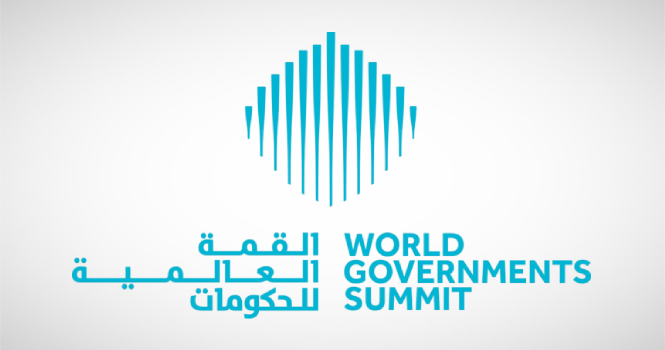
February 12, 2025
The UAE World Government Summit 2025 is set to be a landmark event, bringing together the world’s most influential policymakers, thought leaders, and experts under the inspiring theme, “Shaping Future Governments.” Scheduled to take place from 11–13 February 2025 at the iconic Madinat Jumeirah in Dubai, this summit promises to be a transformative platform for knowledge exchange, collaborative problem-solving, and innovative policy formulation.
The World Government Summit (WGS) is a global platform established in 2013 under the visionary leadership of the UAE Vice President and Prime Minister. It serves as a hub for policymakers, thought leaders, and experts to collaborate on addressing global challenges and shaping the future of governance.
The summit offers a unique opportunity to:
The summit will feature over 200 interactive sessions, including:
Don’t miss out on Dubai’s latest real estate developments! Discover premium properties and exclusive investment opportunities. Click here to explore!
For those unable to attend in person, the summit will offer live streaming options to ensure global participation.
The dialogue doesn’t end when the summit concludes. Participants can stay engaged through:
Conclusion
The UAE World Government Summit 2025 is more than just an event—it’s a global movement towards redefining governance for the 21st century. By bringing together the brightest minds and most influential leaders, the summit aims to inspire innovative solutions, foster international collaboration, and empower the next generation of governments.
Whether you’re a policymaker, industry leader, academic, or simply passionate about shaping the future, this summit offers a unique platform to contribute to global progress. Register today and be part of this transformative experience.
The summit will be held at Madinat Jumeirah in Dubai, UAE.
Visit the official website, complete the registration form, and select your preferred sessions.
The theme is “Shaping Future Governments.”
Yes, the summit will offer live streaming options for virtual participation.
The summit is designed for policymakers, industry leaders, academics, and anyone passionate about governance and sustainable development.
The six key themes are Effective Governance, Financing the Future, Climate Resilience, Human-Centric Futures, Global Health, and Emerging Frontiers.
Participate in post-summit webinars, join online communities, and collaborate on projects with fellow attendees.
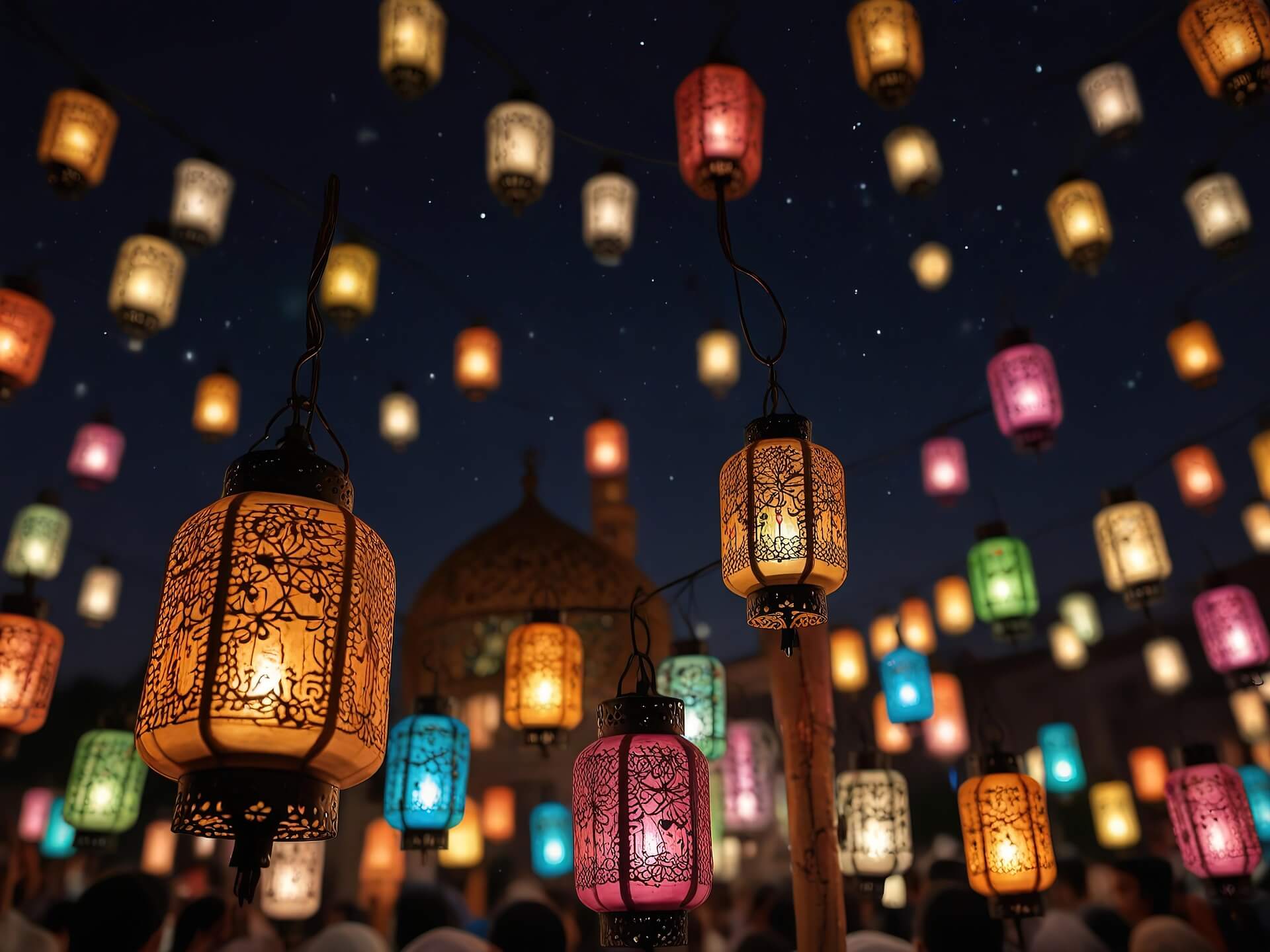
February 10, 2025
Eid Al Fitr is one of the most significant and joyous Islamic holidays celebrated in the UAE, marking the end of the holy month of Ramadan. It is a time for family gatherings, feasting, and giving thanks, as Muslims around the world celebrate the completion of a month of fasting and spiritual reflection. In the UAE, Eid Al Fitr is not only a religious occasion but also a national holiday, bringing together people of all backgrounds to enjoy the festivities. This guide will explore the expected dates, duration, and celebrations for Eid ul Fitr 2025 in the UAE, along with tips to help you plan your holiday.
The exact dates of Eid Al Fitr are determined by the sighting of the crescent moon, which marks the end of Ramadan and the beginning of Shawwal, the 10th month of the Islamic Hijri calendar.
While the official dates are confirmed closer to the event, astronomers have provided predictions to help residents and visitors plan ahead.
1- If Ramadan is 29 days, Eid Al Fitr will likely begin on Sunday, March 30, 2025.
2- If Ramadan is 30 days, Eid Al Fitr will likely begin on Monday, March 31, 2025.
Explore more: When is Ramadan 2025 in Dubai? A Guide to Timings, Changes, and More
If Ramadan is 29 days:
Public holidays: March 30, 31, and April 1.
Combined with the weekend, this results in a 4-day break (March 29 - April 1).
If Ramadan is 30 days:
Public holidays: March 31, April 1, and April 2.
Combined with the weekend, this results in a 5-day break (March 29 - April 2).
The UAE government will officially confirm the dates closer to the event based on moon sightings.
Explore more: The Ultimate Guide to Iftar in Dubai: Best Iftar Experiences, Deals, and Timings
The dates for Eid Al Fitr are determined by the UAE’s moon-sighting committee, which observes the crescent moon to confirm the end of Ramadan and the start of Shawwal.
The Islamic Hijri calendar is lunar-based, meaning the dates shift slightly each year, typically moving backward by 10 to 12 days compared to the Gregorian calendar.
Eid Al Fitr is a time of joy, gratitude, and community in the UAE. The celebrations are a blend of traditional customs and modern festivities, offering something for everyone.
Family Gatherings and Feasts:
Families come together to share lavish meals, often featuring traditional Emirati dishes like Ouzi, Machboos, and sweet treats like Luqaimat.
Eidiya:
A beloved tradition where gifts or money are given to children, symbolizing blessings and joy.
Eid Prayers:
The day begins with special prayers held at mosques and open prayer grounds, followed by greetings of "Eid Mubarak."
Fireworks and Festivals:
Spectacular fireworks displays light up iconic locations like Burj Khalifa, Bluewaters Island, and Yas Island. Cultural festivals, live performances, and family-friendly events are also organized across the country.
The UAE government has established specific rules for public holidays, including those for Eid Al Fitr:
Eid 2025 promises to be a time of joy, celebration, and relaxation in the UAE. Whether you’re planning to spend time with family, enjoy fireworks, or explore cultural events, this guide will help you make the most of the holiday. Stay updated with official announcements to plan your celebrations!
Eid Al Fitr 2025 is expected to be celebrated from March 30 to April 1 (if Ramadan is 29 days) or March 31 to April 2 (if Ramadan is 30 days).
Residents will enjoy at least 3 official days off, with the possibility of a 4-day or 5-day break when combined with the weekend.
Dates are determined by the moon-sighting committee, which observes the crescent moon to confirm the end of Ramadan.
No, Eid holidays cannot be carried over if they fall on a weekend.
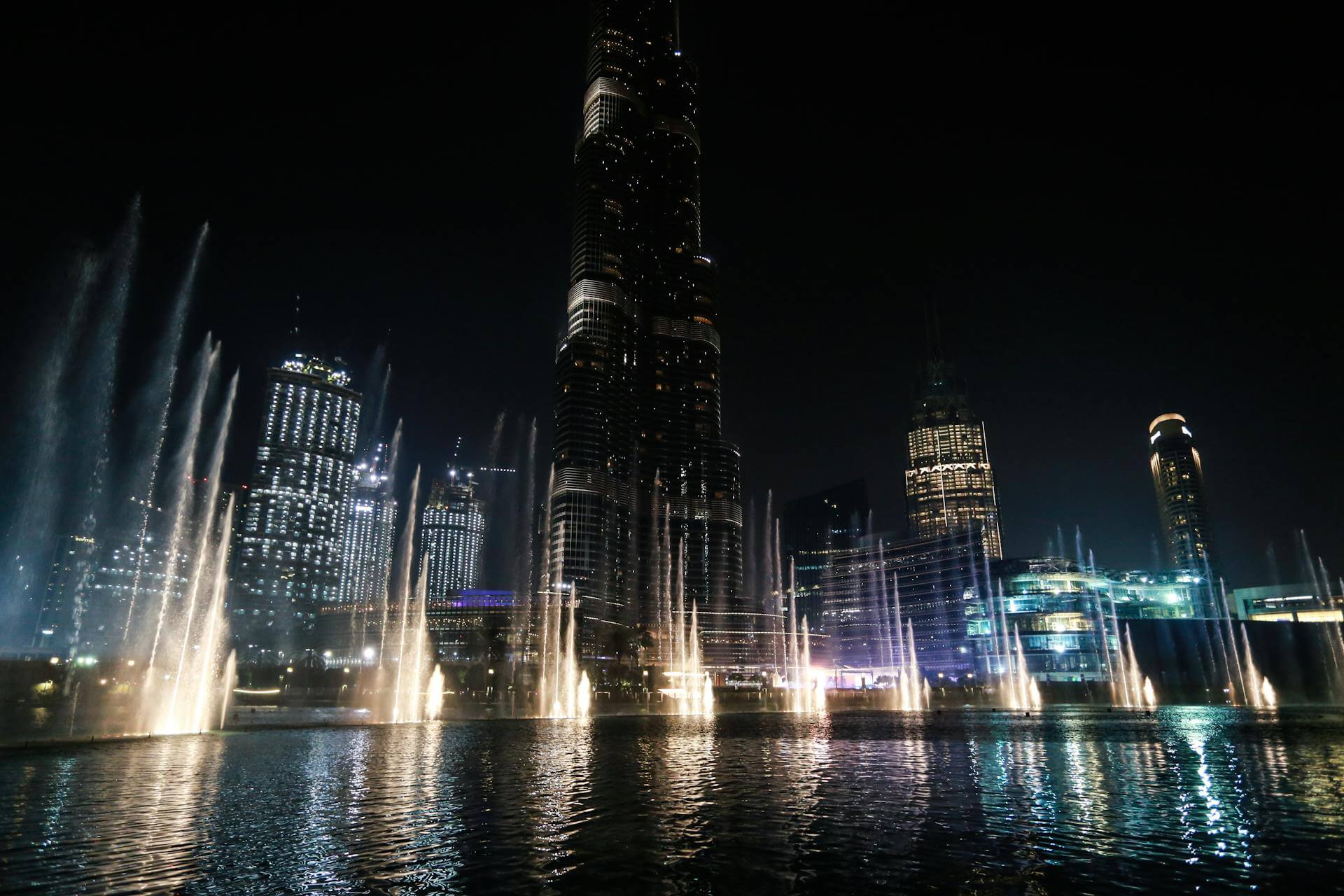
February 6, 2025
Dubai, UAE – February 6, 2025 – Emaar Properties has announced the temporary closure of the iconic Dubai Fountain, the world’s largest performing fountain, for a comprehensive upgrade and maintenance. The renovation is set to begin in May 2025 and is expected to last five months, with a planned reopening in October 2025.
Located in the heart of Downtown Dubai, the Dubai Fountain has been a symbol of artistry and innovation since its debut in 2009. Known for its breathtaking water, music, and light performances, the fountain has captivated millions of visitors annually, making it one of the city’s most beloved attractions.
The upcoming upgrades aim to further elevate the visitor experience by incorporating advanced technology, improved choreography, and state-of-the-art sound and lighting systems. These enhancements will ensure that the fountain continues to deliver mesmerizing performances, solidifying its status as a global landmark.
Mohamed Alabbar, Founder of Emaar Properties, emphasized the significance of the fountain, stating, “Dubai Fountain is more than a spectacle—it is a reflection of Dubai’s soul, where art, innovation, and emotion come together in perfect harmony. As we elevate this iconic landmark, we continue to create experiences that connect people, inspire wonder, and stand the test of time.”
While the Dubai Fountain will be temporarily closed, the surrounding areas, including Burj Lake, Dubai Mall, and Burj Khalifa, will remain open to the public. Visitors can still enjoy world-class shopping, dining, and entertainment options in Downtown Dubai.
The fountain’s choreographed performances, which feature water jets soaring up to 152 meters in the air, are synchronized to a diverse playlist ranging from classical opera to contemporary pop. The upgrades will ensure that these performances remain as captivating as ever, with even more precision and artistry.
Designed by WET Design, the team behind the famed Bellagio Fountains in Las Vegas, the Dubai Fountain has set a global standard for water shows. With 6,600 lights, 25 color projectors, and the ability to shoot 22,000 gallons of water into the air at any given time, the fountain is a marvel of engineering and creativity.
Peter Kopik, Head of Choreography at WET Design, previously highlighted the importance of selecting music that complements the fountain’s grandeur. “We have to ensure the music fits the fountain, not only in terms of choreography but also in respecting its significance. We aim to avoid anything that could detract from the fountain’s elegance,” he explained.
you may also like: New Real Estate projects in Dubai
Emaar’s commitment to preserving and enhancing the Dubai Fountain underscores its dedication to creating unforgettable experiences for visitors. The temporary closure is a necessary step to ensure that the fountain remains a cherished destination for years to come.
As the world eagerly awaits the fountain’s return, visitors are encouraged to explore the vibrant offerings of Downtown Dubai. From the stunning views of Burj Khalifa to the bustling atmosphere of Dubai Mall, there is no shortage of activities to enjoy during this period.
For updates on the renovation progress and the official reopening date, you can follow Mada Properties, which brings you the latest real estate news in Dubai and everything new happening in the city. The revival of the Dubai Fountain will undoubtedly be worth the wait, promising an even more spectacular and immersive experience for all.

February 2, 2025
Ramadan is a sacred month for Muslims worldwide, and Dubai transforms into a hub of spiritual reflection, cultural celebrations, and culinary delights. For residents and visitors alike, experiencing Iftar in Dubai is a must. Whether you're looking for the best Iftar in Dubai, affordable Iftar deals in Dubai, or simply want to know Iftar time today in Dubai, this guide has you covered.
Iftar is the meal that breaks the daily fast during Ramadan, starting at sunset. It’s a time for families and communities to come together, share meals, and celebrate the spirit of the holy month. In Dubai, Iftar is not just a meal; it’s an experience. From lavish buffets to intimate set menus, the city offers something for everyone.
The exact Iftar time in Dubai changes daily, depending on sunset. During Ramadan 2024, Iftar will typically begin between 6:30 PM and 7:00 PM. To stay updated on Iftar time today in Dubai, check local prayer timings or use a reliable Ramadan calendar app.
Ewaan at Palace Downtown: Known for its opulent buffet, Ewaan offers a mix of traditional Arabic dishes and international favorites. Enjoy stunning views of the Burj Khalifa while indulging in delicacies like lamb ouzi and kunafa.
Asateer Tent at Atlantis The Palm: One of Dubai’s most iconic Iftar venues, Asateer offers a grand buffet with over 1,400 seats. The menu features Middle Eastern specialties, live cooking stations, and a dessert section that’s a feast for the eyes.
Mausam at Dubai Mall: Perfect for those on a budget, Mausam offers a curated Iftar menu blending Indian and Middle Eastern flavors. The vegetarian and non-vegetarian thali options are a hit.
Gardenia at Arabian Park Dubai: For an authentic yet affordable Iftar, Gardenia serves hearty dishes like lentil soup, beef goulash, and traditional desserts.
Platinum Heritage Bedouin Camp: Step back in time and experience a traditional Bedouin Iftar in the desert.
Enjoy dishes like lamb ouzi and luqeymat under the stars, accompanied by cultural performances.
Luma Pool Lounge at Address Creek Harbour: Break your fast with a view of the Dubai skyline. The buffet features Middle Eastern and international dishes, with live oud music adding to the ambiance.
Bushra by Buddha-Bar at Grosvenor House: Enjoy an Arabic-style Iftar with stunning views of Dubai Marina.
Riva Beach Club at The Palm: A serene Iftar by the sea with a three-course menu featuring traditional dishes.
Souk Al Iftar at H Hotel: Experience a traditional Arabian souk with Tanoura performances, henna art, and a festive atmosphere.
Price: AED 139 (early bird), AED 179 (during Ramadan)
Timing: From sunset until 9:00 PM
Don’t miss out on Dubai’s latest real estate developments! Discover premium properties and exclusive investment opportunities. Click here to explore!
Many restaurants and hotels in Dubai offer early bird discounts for Iftar bookings. Here are some great deals:
Mada Properties is a premier real estate company operating in Saudi Arabia and the United Arab Emirates, specializing in property sales and real estate investments. With a steadfast commitment to excellence, we prioritize understanding and fulfilling our clients' unique needs with precision and professionalism.
Our team of seasoned real estate agents possesses in-depth expertise in the dynamic UAE property market, positioning us as the preferred partner for clients seeking exceptional investment opportunities across the region.
At Mada Properties, we offer bespoke, premium services designed to align with your real estate goals, whether you're investing in Saudi Arabia or the UAE. Discover the latest real estate projects in Dubai and explore unparalleled investment opportunities. Contact us today to embark on your real estate journey with confidence and clarity.
Conclusion
Dubai’s Iftar scene is a blend of tradition, luxury, and innovation. Whether you’re looking for the best Iftar in Dubai, affordable Iftar deals in Dubai, or simply want to know Iftar time today in Dubai, this guide ensures you have all the information you need. From lavish buffets to intimate desert experiences, the city offers unforgettable Iftar experiences for every taste and budget.
Ramadan Kareem with Mada Properties!
Frequently Asked Questions (FAQ) About Iftar in Dubai
1- What is the best time to book an Iftar spot in Dubai?
It’s recommended to book at least a week in advance, especially for popular venues like Asateer Tent at Atlantis The Palm or Ewaan at Palace Downtown, as these places get fully booked quickly during Ramadan.
2- Can non-Muslims participate in Iftar in Dubai?
Yes, non-Muslims are welcome to join Iftar in Dubai. Many restaurants and hotels offer unique Iftar experiences suitable for all cultures.
3- What are the traditional dishes to try during Iftar in Dubai?
Some traditional dishes you should try include:
4- Are there special Iftar deals in Dubai?
Yes, many restaurants and hotels offer special Iftar deals, such as early bird discounts or family packages. For example, Olea at Kempinski Mall of the Emirates offers early bird discounts.
5- What is the best time to arrive at an Iftar venue?
It’s best to arrive 15-20 minutes before Iftar time to secure a good spot, especially at popular buffets that get crowded at sunset.
6- Are there child-friendly Iftar venues in Dubai?
Yes, many Iftar venues in Dubai are family-friendly and offer special menus or discounts for children. For example, Ewaan at Palace Downtown offers a discounted rate for kids aged 6-11.
7- What should I wear to an Iftar event in Dubai?
It’s recommended to wear modest and respectful clothing during Ramadan. For upscale venues, smart casual attire is appropriate.
8- Can I find vegetarian or vegan Iftar options in Dubai?
Yes, many Iftar venues in Dubai offer vegetarian and vegan options. Restaurants like Mausam at Dubai Mall provide curated vegetarian thali menus.
9- Are there any unique Iftar experiences in Dubai?
Absolutely! You can enjoy unique Iftar experiences such as:

January 27, 2025
Ramadan is a sacred time of spiritual reflection, fasting, and community bonding for Muslims worldwide. In Dubai, the holy month brings significant changes to daily life, from adjusted working hours to modified transport schedules and parking timings. Whether you're a resident or a visitor, understanding these adjustments is key to navigating the city seamlessly during this special time.
In this guide with Mada properties, you will explore everything you need to know about Ramadan 2025 Dubai, including updates on Salik toll pricing, changes to parking timings, and how the city adapts to accommodate the spiritual practices of the month. Stay informed and make the most of this unique experience in Dubai!
Ramadan 2025 is expected to begin on Saturday, March 1, 2025, depending on the official moon sighting. The exact date will be confirmed closer to the time by the UAE’s Moon Sighting Committee.
The holy month lasts for 29 or 30 days, culminating in the joyous celebration of Eid al-Fitr, which marks the end of fasting and spiritual reflection.
Ramadan holds profound significance in the Islamic calendar as it commemorates the revelation of the Holy Quran to Prophet Muhammad (PBUH).
It is a time for fasting, prayer, charity, and community bonding. In Dubai, Ramadan transforms daily life, with adjustments to working hours, transport schedules, parking timings, and more, ensuring residents and visitors can observe the holy month with ease and convenience.
Explore More: The Ultimate Guide to Iftar in Dubai: Best Iftar Experiences, Deals, and Timings
Ramadan 2025 in UAE will bring significant adjustments to daily routines in Dubai, impacting various aspects of life, including working hours, transport schedules, parking timings, and school schedules.
These changes are designed to align with the spiritual practices of the holy month, ensuring a seamless experience for residents and visitors alike.
The adjustments during Ramadan aim to accommodate fasting, prayers, and spiritual activities while maintaining convenience for everyone.
From shorter workdays to modified transport and parking rules, these changes reflect Dubai’s commitment to respecting the sanctity of Ramadan while keeping the city functional and accessible.
Whether you’re planning your daily commute, managing work schedules, or exploring the city, understanding these Ramadan 2025 Dubai changes will help you navigate the month with ease. Stay updated to make the most of this special time in Dubai!
During Ramadan 2025, employees in Dubai’s private sector will benefit from reduced working hours. As per Cabinet Resolution No. 1 of 2022, the workday will be shortened by 2 hours for all employees, regardless of their religious affiliation.
Applicability: The reduced hours apply to both Muslim and non-Muslim workers.
Salary Impact: There will be no salary deductions for the reduced working hours.
Purpose: This adjustment allows employees to dedicate more time to prayer, spiritual reflection, and family commitments during the holy month.
Public sector employees in Dubai will also experience reduced working hours during Ramadan. While the exact timings may vary, the reduction typically aligns with the private sector’s 2-hour decrease.
The primary goal of reducing working hours during Ramadan is to support the spiritual and physical well-being of individuals.
Ramadan 2025 in Dubai will bring significant adjustments to transport systems, including Salik toll pricing and public transport timings, to accommodate the spiritual and practical needs of residents and visitors.
Dubai’s Salik toll system will implement special pricing and timing changes during Ramadan:
Dubai’s public transport systems, including the Dubai Metro and buses, will also see changes to align with Ramadan schedules.
During Ramadan 2025, Dubai will implement adjusted parking timings to accommodate the spiritual and practical needs of residents and visitors.
Dubai’s paid parking zones will operate on modified schedules during Ramadan:
Some areas in Dubai may offer free parking during Iftar hours (typically around sunset) to support those breaking their fast and attending prayers.
During Ramadan 2025, schools in Dubai will adjust their schedules to accommodate the spiritual and practical needs of students, teachers, and families.
Private schools in Dubai will implement reduced hours to align with the spirit of Ramadan.
Public schools in Dubai are expected to follow similar adjustments to private schools during Ramadan 2025.
Dubai’s shopping and dining scene will undergo significant adjustments during Ramadan 2025 to accommodate the spiritual practices and lifestyle changes of the holy month.
Dubai’s malls will extend their operating hours to cater to the increased evening activity during Ramadan.
Operating Hours: Extended hours, staying open until late at night (often until midnight or later).
Special Events: Many malls host Ramadan-themed events, promotions, and decorations.
Restaurants and cafes in Dubai will adjust their operations to respect fasting hours while catering to non-fasting individuals.
Mada Properties is a leading real estate company in Saudi Arabia, and the United Arab Emirates specializing in property sales and real estate investments.
With a strong commitment to delivering exceptional quality, we focus on understanding and meeting our clients' needs with precision and excellence.
Our Team of Real estate agents also specializes in the dynamic real estate market of the UAE, making us the go-to choice for clients seeking exceptional investment opportunities across the region.
At Mada Properties, we provide tailored premium services to meet your real estate aspirations, whether you're investing in Saudi Arabia or the UAE. If you're interested in real estate investment, explore the new real estate projects in Dubai and the latest investment opportunities. Contact us today to start your journey with confidence
FAQs About Ramadan 2025 in UAE
When is Ramadan 2025 in Dubai?
Ramadan 2025 is expected to begin on Saturday, March 1, 2025, subject to the official moon sighting.
What Are the Salik Toll Charges During Ramadan?
During Ramadan 2025, Salik toll charges in Dubai will follow a special pricing structure:
Are Schools Closed During Ramadan?
No, schools are not closed during Ramadan. However, school hours are reduced to a maximum of 5 hours per day, with classes typically ending by 12 PM on Fridays.
Conclusion
Ramadan 2025 Dubai is a time of spiritual reflection, community bonding, and cultural richness. By understanding the adjustments to working hours, transport schedules, parking timings, and more, you can navigate the holy month with ease and make the most of this special time in Dubai.
Whether you're a resident or a visitor, these insights will help you embrace the unique rhythms of Ramadan while enjoying the vibrant culture of the city.
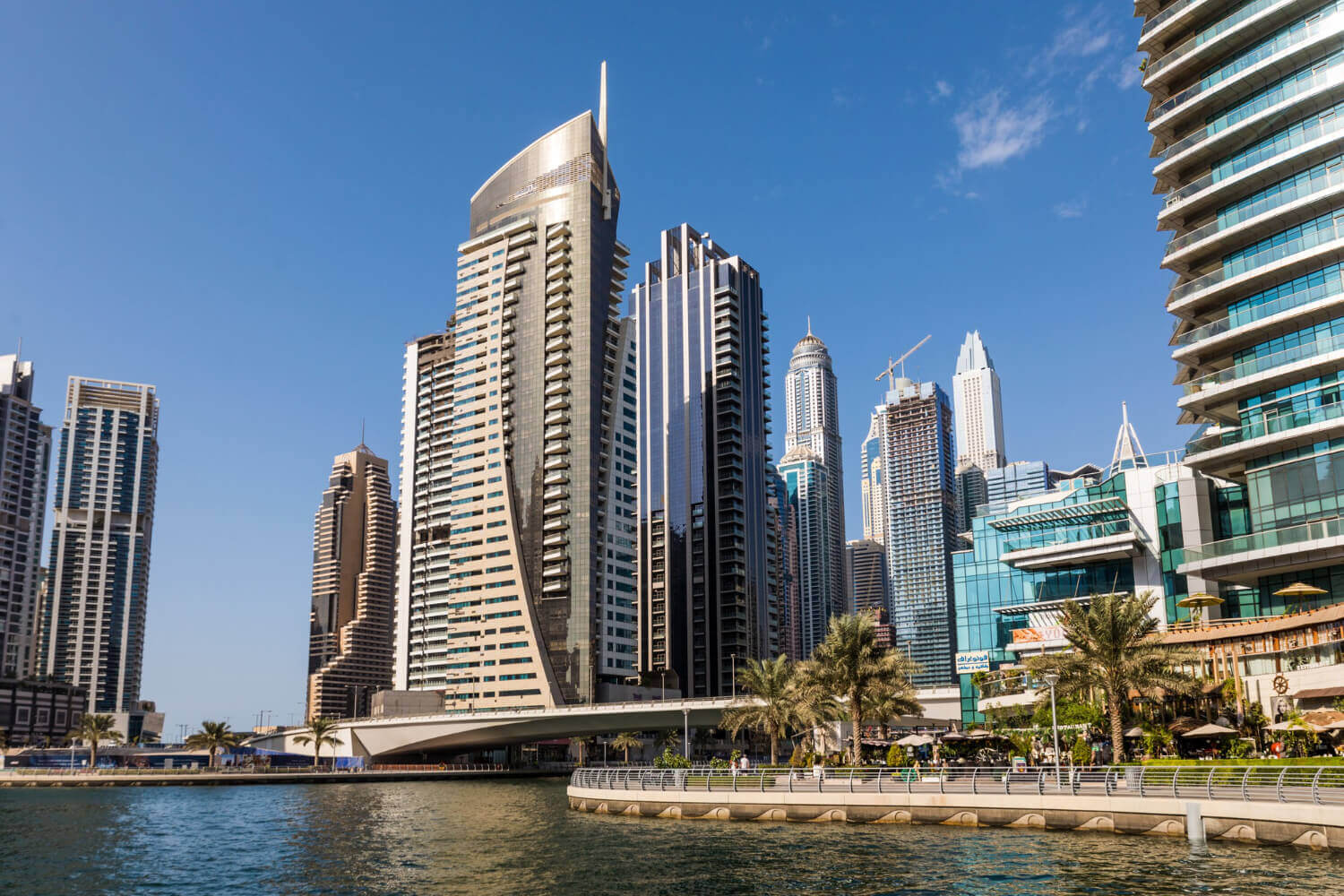
January 22, 2025
Dubai continues to attract global real estate investors, offering a diverse and full-of-opportunity market, the city has something for everyone, from high-end properties in established areas to new developments in emerging neighborhoods.
Whether you're a seasoned investor or exploring your first real estate venture in Dubai, it’s essential to understand the best areas to invest in Dubai to maximize returns and capitalize on the city’s dynamic real estate market.
Dubai’s real estate market is unique, providing unrivaled opportunities backed by strong economic growth, investor-friendly policies, and its strategic location at the crossroads of major global trade routes.
This guide takes a closer look at the best area for property investment in Dubai and provides insights into how to navigate the Dubai property market successfully, whether it’s finding the best property investment Dubai or exploring off-plan property Dubai opportunities, this guide covers it all.
Dubai stands out as a prime investment destination for several key reasons:
Dubai's real estate market is rich with diverse neighborhoods, each offering something unique for investors. Whether you're looking for high-end luxury or more affordable options, the city has something for everyone. Let’s explore the best areas to invest in Dubai when buying property.
If you're looking for the heart of Dubai, Downtown is where you'll find it. This area is home to some of the city's most iconic landmarks, like the Burj Khalifa, the world’s tallest building, and the Dubai Mall, one of the largest shopping centers globally. It's a sought-after destination for those looking for best area for property investment in Dubai.
What Makes Downtown Dubai Stand Out:
Note: Interested in investing in Downtown Dubai? Explore apartments for sale at Elegance Tower by Damac.
Dubai Marina is all about luxury with a laid-back vibe. With its waterfront views, beautiful residential towers, and vibrant nightlife, it’s no wonder this area attracts investors looking for the best property investment Dubai.
Why Dubai Marina Is a Great Investment:
Palm Jumeirah isn't just an address—it's a statement. This world-renowned man-made island is home to some of the most luxurious villas, beachfront apartments, and resorts in the city. If exclusivity is what you're after, Palm Jumeirah is among the best areas to invest in Dubai.
What You Get with Palm Jumeirah:
JVC provides a completely different kind of living experience. It's an up-and-coming area offering family-friendly spaces at more affordable prices. With spacious villas, townhouses, and apartments surrounded by parks, JVC is ideal for real estate investment in Dubai.
Why JVC Might Be the Right Choice:
Note: Looking to invest in Jumeirah Village Circle (JVC) at Dubai? Explore Now Binghatti Royale at JVC with Reasonable prices
Located just minutes from Downtown Dubai, Business Bay is a growing central business district that also has plenty to offer for residential investors. Whether you’re looking for a commercial space or a residential property, Business Bay is one of the best areas to buy property in Dubai.
Why Invest in Business Bay:
Investing in off-plan property Dubai is a common approach for many looking to enter the market. You get the chance to buy something before it's finished, usually at a lower price than completed properties. This could mean significant financial gains as the construction progresses.
Why People Choose Off-Plan Properties:
Explore Now: The New Real Estate Projects in the UAE
Choosing the best property investment in Dubai requires careful thought:
You might also like: Dubai mortgage for non residents.
MADA Properties is one of Dubai and KSA’s leading real estate brokers, specializing in both luxury residential and commercial properties. They provide expert advice and support to help you find the best property investment in Dubai.
Investing in Dubai’s real estate market offers long-term wealth-building opportunities.
By understanding the best area for property investment in Dubai, such as Downtown, Palm Jumeirah, and Business Bay, and exploring options like off-plan property Dubai, you can make informed decisions that align with your financial goals.
Partnering with trusted experts like MADA Properties can further enhance your journey in one of the world’s most dynamic real estate markets.
1- What’s the real estate market like in Dubai?
Right now, people are focusing more on affordable housing, especially in areas like JVC and Dubailand. But the high-end spots like Downtown and Palm Jumeirah still pull in a lot of investors.
2- Is off-plan property a good investment?
Off-plan can be a good choice if you’re looking for lower prices early on. Just make sure you check out the developer and pay attention to how the market’s moving.
3- Can foreigners buy property in Dubai?
Yes, they can in certain areas. It’s important to have a solid agent and legal help to make sure everything goes smoothly.
4- How can investors increase rental income?
Go for areas with good demand, close to transport and amenities. Keep the property in good shape and price it right to attract tenants.
5- What affects property prices in Dubai?
Prices are affected by things like supply and demand, new projects, and government policies. Areas with new developments often see prices rise

January 19, 2025
In the world of real estate, understanding what is ROI in real estate is essential for making informed investment decisions. ROI in real estate stands for Return on Investment, a key metric that helps investors evaluate the profitability of their property investments. If you’re considering Dubai real estate investment (ROI) or looking into other markets, knowing what is ROI in Dubai real estate will guide your financial decisions. This blog will help you understand the concept, calculate ROI, and discover what constitutes a good ROI in real estate.
What is ROI in real estate? Simply put, ROI is the percentage of profit made on a real estate investment relative to its cost.
It is an essential tool for investors to evaluate the potential returns from a property.
The formula for ROI in Dubai real estate is: ROI = (Net Profit / Total Investment) × 100
For instance, if you purchase a property for $200,000 and sell it for $250,000, the ROI in real estate would be:
ROI = ((250,000 - 200,000) / 200,000) × 100 = 25%
This 25% ROI tells you that for every dollar invested, you earned 25 cents in profit.
When investors ask what is a good ROI in real estate, the answer varies depending on the market and property type.
However, a general rule is that a good ROI in real estate should be between 8% and 12%. In some markets, you may see even higher returns.
If you’re looking into specific markets like Dubai real estate investment (ROI), the returns can differ.
Best ROI Dubai property can range from 5% to 10% for residential properties, and commercial properties in high-demand areas may provide an even better ROI, potentially reaching 12% or more.
Note: Discover new real estate projects in the UAE.
To calculate ROI on real estate, you must account for all costs associated with the property, including purchase price, maintenance costs, and rental income.
For example, let’s say you purchase a property for $300,000, spend $20,000 on repairs, and generate $30,000 in annual rental income.
To calculate your ROI, you would use this formula:
ROI = ((Rental Income - Costs) / (Property Purchase + Repair Costs)) × 100
Here, the average ROI on real estate could be in the range of 7% to 10%, depending on how well you manage the property and its expenses.
The average real estate return on investment can vary greatly depending on the type of property and location.
For residential properties, the average ROI on real estate is typically between 5% and 9%, while commercial properties often yield higher returns, ranging from 10% to 15%.
It’s important to research the market conditions in the area you’re investing in to estimate the average real estate return on investment accurately.
When considering a location like Dubai, the average ROI on real estate can vary significantly by district.
Premium locations like Downtown Dubai may offer lower yields but substantial capital appreciation, while emerging neighborhoods may provide higher ROI on real estate but come with more risk.
Note: Discover a Variety of Properties for Sale in the UAE
When it comes to commercial properties, you might wonder, what is a good ROI on commercial real estate? Typically, commercial real estate investments offer higher returns than residential properties, with what is a good ROI on commercial real estate usually ranging from 10% to 15%. Factors such as long-term leases and stable tenant demand contribute to higher ROI for commercial properties.
If you're considering commercial spaces in cities like Dubai, the best ROI Dubai property could reach these higher figures, especially if you invest in prime business locations.
Note: You can now Explore Our Listed Commercial Properties for Sale UAE
If you’re specifically interested in the best ROI in Dubai real estate, focus on areas with high tenant demand and potential for long-term growth.
Prime areas like Dubai Marina and Business Bay offer strong rental yields and are likely to continue appreciating, making them top choices for Dubai real estate investment (ROI).
On the other hand, emerging areas like Dubai South or Jumeirah Village Circle may offer higher ROI on real estate, particularly for investors willing to take on a bit more risk.
The best ROI in Dubai real estate will also depend on your investment horizon. If you are seeking short-term rental income, high-demand areas like Palm Jumeirah might offer more immediate returns.
However, if you are interested in long-term appreciation, investing in up-and-coming areas in Dubai may provide the best ROI Dubai property over the years.
So again, What is a Good ROI in Real Estate?
So, what is a good ROI in real estate? A good ROI generally falls between 8% and 12%.
However, this can vary based on factors like property type, location, and the economic climate of the area you’re investing in.
For example, a good ROI in real estate in cities like Riyadh or Dubai can range from 7% for residential properties to 12% for commercial investments.
It's crucial to consider not only the potential returns but also the level of risk and the property’s marketability.
To maximize your ROI in real estate, consider the following strategies:
In conclusion, understanding what is ROI in Dubai real estate is crucial to making smart investment choices.
Whether you're considering Dubai real estate investment (ROI) or any other market, knowing how to calculate and assess ROI in real estate will guide you toward making profitable investments.
While residential properties generally offer what is a good ROI in real estate in the range of 5% to 9%, commercial properties and prime locations like best ROI Dubai property can yield significantly higher returns.
Always keep the local market dynamics in mind to achieve the best ROI in your real estate investments.
When you think of Dubai real estate investment (ROI), think of Mada Properties. We offer innovative strategies designed to maximize your returns, whether you're considering what is a good ROI on rental property or looking for what is a good ROI on commercial real estate.
Expert Guidance: Our team provides expert insights into what is a good ROI in real estate and how to achieve it.
Comprehensive Services: From property listings to professional management, Mada handles it all.
Global Reach: Whether it’s a residential or commercial property, we’ll help you find the best ROI for rental property.
Let Mada Properties help you unlock the best ROI Dubai property and turn your real estate investment into a successful venture, contact the best real estate agent in Dubai!
How to calculate ROI on property Dubai?
To calculate your ROI, you would use this formula:
ROI = ((Rental Income - Costs) / (Property Purchase + Repair Costs)) × 100

January 14, 2025
The Zayed Sustainability Prize stands as a testament to the UAE’s unwavering commitment to fostering sustainable development and addressing global challenges.
Established in 2008 by His Highness Sheikh Mohammed bin Zayed Al Nahyan, Crown Prince of Abu Dhabi and Deputy Supreme Commander of the UAE Armed Forces, the prize honors the legacy of the late Sheikh Zayed bin Sultan Al Nahyan, the UAE’s founding father.
Over the years, it has evolved into one of the world’s most prestigious awards, recognizing groundbreaking solutions in sustainability across multiple sectors.
The Zayed Sustainability Prize is a global award that celebrates innovators and visionaries who have made significant contributions to sustainability.
It aims to inspire and empower individuals, organizations, and schools to develop impactful solutions that address pressing global challenges.
The prize is awarded across six categories: Health, Food, Energy, Water, Climate Action, and Global High Schools. Each category focuses on transformative projects that improve lives, protect the environment, and promote sustainable development.
Since its inception, the prize has recognized 106 winners whose initiatives have positively impacted over 378 million people worldwide.
By rewarding innovation, impact, and inspiration, the Zayed Sustainability Prize continues to drive progress toward a more sustainable future.
The Zayed Sustainability Prize winners are a diverse group of trailblazers who have demonstrated exceptional creativity and dedication to solving global challenges. From providing access to clean energy and safe drinking water to improving healthcare and food security, these winners have set new benchmarks for sustainability.
For instance, past winners have introduced cutting-edge technologies, innovative business models, and community-driven projects that have transformed lives in underserved regions.
Their achievements align with the UAE’s National Agenda 2021 and the United Nations’ Sustainable Development Goals, showcasing the power of collaboration and innovation in addressing global issues.
Learn More: Eco Friendly desert homes
The Zayed Sustainability Prize is a cornerstone of Abu Dhabi Sustainability Week (ADSW), one of the world’s largest sustainability gatherings.
Held annually in the UAE capital, ADSW brings together leaders, policymakers, industry experts, and youth to discuss and collaborate on solutions for a sustainable future.
The Abu Dhabi Sustainability Week 2025 promises to be a landmark event, featuring high-level discussions, exhibitions, and networking opportunities.
The week-long agenda will focus on key themes such as climate action, renewable energy, water security, and food sustainability.
It will also highlight the role of emerging technologies, including artificial intelligence and carbon capture, in driving sustainable development.
Note: Interested in investing while in Abu Dhabi? Explore apartments for sale at Louvre Abu Dhabi Residences Starting price: 1,300,000 AED.
Date: The event will take place in January 2025, with the exact dates to be announced.
Location: Hosted in Abu Dhabi, the event will attract over 3,500 delegates from around the world.
Agenda: The Abu Dhabi Sustainability Week agenda will include panel discussions, workshops, and exhibitions focused on accelerating the global energy transition, enhancing food security, and promoting sustainable urban development.
Zayed Sustainability Prize Awards Ceremony: The 16th edition of the awards ceremony will be a highlight of the week, celebrating the 2025 winners and their remarkable contributions to sustainability.
The Zayed Sustainability Prize is divided into six categories, each with a unique focus and reward structure:
Health: Recognizes projects that improve access to affordable healthcare, combat epidemics, and reduce pollution-related illnesses.
Prize: $600,000
Food: Awards initiatives that address hunger, increase agricultural productivity, and promote sustainable food production.
Prize: $600,000
Energy: Celebrates innovations in clean energy access, production, and infrastructure efficiency.
Prize: $600,000
Water: Honors solutions that provide safe drinking water, improve sanitation, and enhance water usage efficiency.
Prize: $600,000
Climate Action: Recognizes projects focused on climate adaptation, environmental solutions, and long-term sustainability planning.
Prize: $600,000
Global High Schools: Encourages student-led projects that address sustainability challenges in their communities.
Prize: $150,000 per school (divided among six regional winners)
The Zayed Sustainability Prize is open to small and medium-sized enterprises, non-profit organizations, and high schools worldwide.
Applicants are evaluated based on three key criteria: Innovation, Impact, and Inspiration. Winners receive funding to scale their projects and amplify their impact, with a total prize fund of $3 million distributed across the six categories.
For those interested in applying, the submission process is straightforward. Applicants must create an account on the official portal, complete the application form, and submit their project details.
The next cycle of submissions will open soon, offering another opportunity for innovators to showcase their solutions on a global stage.
One of the most inspiring aspects of the Zayed Sustainability Prize is its focus on youth empowerment. The Global High Schools category encourages students to develop innovative projects that address sustainability challenges in their communities.
Winning schools receive funding to implement their ideas, fostering a culture of innovation and leadership among young people.
This emphasis on youth aligns with the vision of Sheikh Zayed, who believed in the power of education and innovation to shape a better future.
By engaging the next generation, the prize ensures that sustainability remains a priority for years to come.
The Zayed Sustainability Prize and Abu Dhabi Sustainability Week are shining examples of the UAE’s leadership in promoting global sustainability.
Through these initiatives, the UAE is not only honoring the legacy of Sheikh Zayed but also inspiring individuals and organizations worldwide to take bold steps toward a more sustainable future.
As we look forward to Abu Dhabi Sustainability Week 2025, the world can expect groundbreaking discussions, transformative collaborations, and a renewed commitment to addressing the most pressing challenges of our time. The Zayed Sustainability Prize will continue to play a pivotal role in this journey, celebrating the innovators and visionaries who are shaping a better world for generations to come.
Mada Properties stands as a leading real estate company in Saudi Arabia, renowned for its comprehensive services in property sales, and real estate investments.
Committed to delivering unparalleled quality, we prioritize meeting our clients' needs with precision and excellence. Additionally, our expertise extends to the dynamic real estate market of the UAE, positioning us as the premier choice for clients seeking exceptional investment opportunities across the region.
Explore Mada Properties to experience our premium services, thoughtfully designed to align with your aspirations in both Saudi Arabia and the UAE.
1. What is the Zayed Sustainability Prize?
The Zayed Sustainability Prize is a global award established by the UAE to honor innovative and impactful sustainability solutions. It recognizes individuals, organizations, and schools that contribute to addressing global challenges in health, food, energy, water, climate action, and education.
2. Who can apply for the Zayed Sustainability Prize?
The prize is open to:
3. What are the categories of the Zayed Sustainability Prize?
The prize is awarded in six categories:
4. How much is the Zayed Sustainability Prize worth?
The total prize fund is $3 million, distributed as follows:
5. How are Zayed Sustainability Prize winners
selected?
Winners are selected through a three-stage evaluation process:
Initial Screening: Submissions are reviewed to ensure they meet the criteria.
Shortlisting: A selection committee evaluates and shortlists finalists.
Final Decision: A jury panel interviews finalists and selects the winners.
6. When is the Zayed Sustainability Prize awarded?
The winners are announced during the Zayed Sustainability Prize Awards Ceremony, which takes place annually as part of Abu Dhabi Sustainability Week in January.
7. What is Abu Dhabi Sustainability Week?
Abu Dhabi Sustainability Week (ADSW) is one of the world’s largest sustainability gatherings. It brings together global leaders, policymakers, and innovators to discuss and collaborate on solutions for a sustainable future. The Zayed Sustainability Prize Awards Ceremony is a key highlight of the week.
8. When and where is Abu Dhabi Sustainability Week 2025?
9. What is the agenda for Abu Dhabi Sustainability Week 2025?
The Abu Dhabi Sustainability Week agenda includes:
10. How can I apply for the Zayed Sustainability Prize?
To apply:
11. Can I attend Abu Dhabi Sustainability Week 2025?
Yes, Abu Dhabi Sustainability Week is open to delegates, including industry professionals, policymakers, and sustainability enthusiasts. Registration details will be available on the official ADSW website closer to the event date.